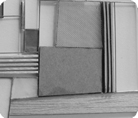

The subject of this thesis is the concept of underground dwelling, as a cryptic and invisible act of habitation in theory, and also in action, in matters of creating and taking advantage of invisible space. Under these two perspectives, the person of a rag collector appears to be the creator of an underground habitation complex, consisting of several units that leach on the underground maintenance shafts of the rain water collection pipe system of Volos.
This underground dwelling system in which the Collector habitats, is to be revealed and documented as an archeological find by another fictional character, the Investigator. The thesis presents the drafting, documentation and study of the dwelling as executed by the Investigator, who becomes obsessed by his research.
The storage and organization practices as well as the compositional attributes of a collector are presented through this fictional human dipole, and in the end, the Investigator’s research on the Collector’s hoarding behavior becomes an obsession on collecting information instead of objects.
Supervisor: Antonas Aristide
Reference Number: 204
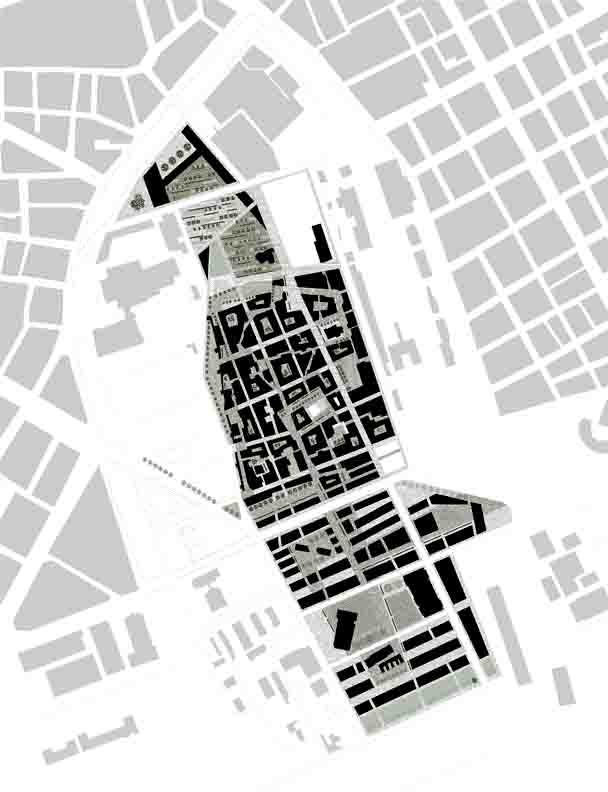

The present degree thesis contributes in its own way in the dialogue concerning the Greek city in the 21st century. The intervention in the modern urban web, the management of memory in the city, the tendencies of growth, the quality of life of its residents, are some of the issues it tries to resolve. As a field of application the city of Volos is chosen and more specifically the region called “Palaia”. Palaia district is a zone with a heavy historical load (Ottoman castle) which has been developing rapidly during the last decade. Even though the area is placed in the parameter of the city centre it is abstracted from it because of its natural location and certain facilities that were developed in its threshold (Train Station, Commercial Harbor). Even within the borders of the area the quality of life differs significantly from the north part to the south, which is degraded as a result of the activities of the Commercial Harbor.
This proposal makes an effort to solve the problems mentioned above, in a direction of upgrading the area to a supralocal centre including both old and new landmarks, better quality of life and new uses.
The new web is a result of the conjunction of the medieval web of the castle with the pre-existing one and its expansion to the south part of the area. For the city planning we chose to use the “traces” and the features, of the properties and their boundaries, rather than a specific historical period. As a result a contemporary vocabulary is created, which blends the complexity of the past with the regularity of today. The location of the functions changes as well, in the direction of creating new public spaces, expanding the functional and cultural infrastructures of the city and improving the residents’ quality of life.
Supervisor: Papadopoulos Lois
Reference Number: 252


Thomas Bernhard is an Austrian author, who was born on the 9th February 1931.
Thomas Bernhard is considered to be one of the greatest authors of our time., he belongs to the generation of literature that begins to publish after the war and with his peculiar writing he defines in a large scale the directions of the younger generation of Austrian authors.
Bernahrd wrote poems, novels and theatrical plays. He was also involved with music and he worked as a journalist. In his works he appears detached but a practiced observer.
Correction is a novel by Thomas Bernhard translated by Vasilis Tomanas from Exantas publications, 1998.
It was written in 1975 having been a decade drifted away in his farm.
The correction deals with human relations the attitude of certain people in some situations, weaknesses of comprehensions and of communication and the true friendship between three people that manages to overcome the stereotypes of a certain era.
A lifetime relation that ends with death.
The correction is a patchwork of manuscripts by Roithamer (the novel’s main character).
In the manuscripts beyond interpersonal relations and the dipoles beginning-end, life-death it appears that the author is occupied with the concept of utopia, the boundaries between architecture and the building as well as the relations between the site and
the habitation.
Roithammer builds at the Kobernausser forest of Austria, a house for his sister in a cone shape.
The thesis is the transport of Roithammer’s manuscript for the ideal cone-habitat in an architectural building.
Supervisor: Kotionis Zissis
Reference Number: 232
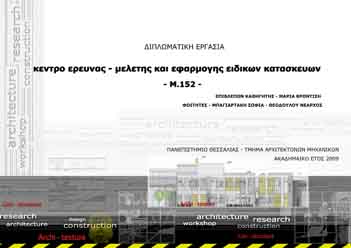

The thesis deals with the construction of a Center for Research, Study and Application of Special Structures in the city of Volos. The research center that we propose is to promote the study of specific structures to facilitate and encourage young researchers to undertake their own ideas about construction and to optimize the relationship between the designer and the production of an object. The way the above objectives are established is through research programs, construction workshops, and finally with exhibitions.
The area chosen is the land across from the Faculty of Engineering, University of Thessaly. The plot is an abandoned industrial building (Building Plataniotis) of 1965 which was previously used as a machine shop. The main reason for selecting the location is the key position of the plot.
The block in which the plot we defined the torrent Krafsidonas and the two main roads entering the city. Thus, access to land is relatively easy by the visitors of the site. The key position of the plot is further emphasized by the fact that it is the meeting point of four areas (Neapolis in the northwest, Nea Ionia in the North, Volos Municipality in the northwest and the region of Palaia in the East).
Through our research into similar research centers some basic and secondary needs areas / functions. So we defined spaces for three units to meet the needs of the Research Center. The Workshop area where you can study, manufacture and assemble a special structure, the offices area where the researchers main offices are with secondary office uses and the Hospitality area with dorms to rest for about 20-25 people.
After the study we did for other research centers we have organized the different research programs which we set at a specific time frame set in conjunction with our building program and scenarios users have helped us to find different ideas. After that we tried to experiment with the relocation of the three different sections in the plot, focusing on access areas and sightings that have been created.
In our final idea initially we tried to put the Workshop area and Offices to interact at various levels. Theoretically, the observation of practice gives the position in the knowledge and continuity in theory and debate and vice-versa. In practice we achieved that by creating a bridge combining the Workshop with the Office area, where the extension of the bridge to the Workshop creates a visual point-to Central Hall (study-assembly-practice), then moving to site Reading area (knowledge) and arrive at the meeting point (theory-discussion-presentation). Similarly, in the ground floor, we have implemented the practice in a direct way in the Central Hall and an imaginary line connection under the bridge (by putting Offices and Workshop entrances opposite each other) the two modules with the theory-presentation-conferences which take place in the Auditorium.
A second element of our final idea is the use of walls as versatile tools. The placement of two walls parallel and along the Workshop area creates a ''possible'' movement between the Workshop and Offices area (side to side movement). On one wall,' 'touching'' the ancillary uses of the unity of Office (Auditorium, colleagues, meeting rooms, printing, etc.) and on the second wall entering the core functions (the offices of the researchers) with a more open and flexible provision in the premises . The corridor created by the two walls is the axle drive unit of the Office area. The third wall (under Hospitality) operates differently. The side facing the small square operates as a limit that leads the visitor to it cuts off while not allowing the visitor to enter the private area (dormitory accommodation). Additional functions as viewing wall and take some interactive uses. The placement of the staircase on the side of the square is to increase the viewing points and motion along the wall. The division of the wall into three parts increases the viewing points. The relationship between spectator and participant changes, relatively to his position, when he walks in the square facing those moving along the wall and so vice versa. Finally, installations in the wall openings can be used for small exhibits and informative posters.
Supervisor: Vrontissi Maria
Reference Number: 230
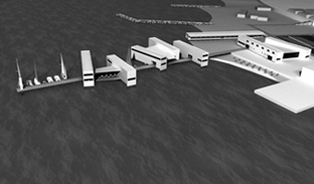

The subject of diplomatic work, concerns the construction of buildings for rowing - sailing and the configuration of coast’s environment of Naval Group Volos (Coast N.G.V.) in the region Anavros, where also will be held the Mediterranean Games of 2013. The final product is based on the allowance of this area, which will serve the increased building needs of the Games. After their completion, buildings will be delivered at the local self-government of Volos for exploitation by the wide public.
Supervisor: Paniyiris Costis
Reference Number: 207


The present study concerns the historical center of the city of Larissa, the area of “Frourio”. As the Frourio area we embrace the territorial hill at the North-center part of the city that is bounded by Dimitras, Venizelou and Georgiadou Street and, from the west side, by the river Pinios.
The scouting and registration of the Frourio’s past, the impression of the current situation and the spotting of the problematic points, were the ignition for the determination of the aims and designing concepts.
The area retains the stratigraphy of the historical phases of the hill. We meet monuments and findings of great archeological interest such as the ancient theater at the foothills, which is the top-ranking point. These elements, combined with the characteristics of the hill, like the intense hypsometrical variations, set the bases for the subsequent designing choices.
The aim of the study is the recreation of the image and the recapture of the territorial identity as well as the activation and the conversion from an isolated and declined city center to a place of cultural and social activity. Among the means are the consideration of the land’s usages and the limits of topicality- hyper topicality. The incorporation of the area in the structure and the functions of the city are essential as well as the expansion of the public space of the city. Another point about the area that is taken under consideration is its misappropriation from the local people and its function as an outlet of social needs.
The rehabilitation proposal consists of interferences on public space, modulations of square-landscape, propositions on land usage and creation of social and cultural interesting. Some of the interventions on buildings at this particular area regard exhibition places, lecture- presentation rooms, libraries, student homes, hospitality rooms and parking areas. Those interventions was made in order to support the basic movement axis that were created in the proposal’s frames, give life to the hill and correspond to the needs of the whole area.
Supervisors: Papadopoulos Spiros, Philippitzis Dimitris
Reference Number: 236
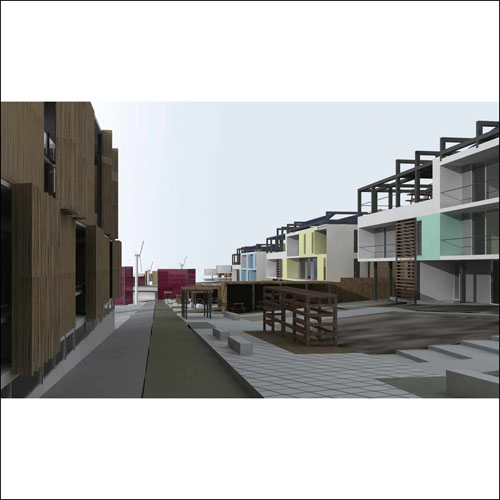



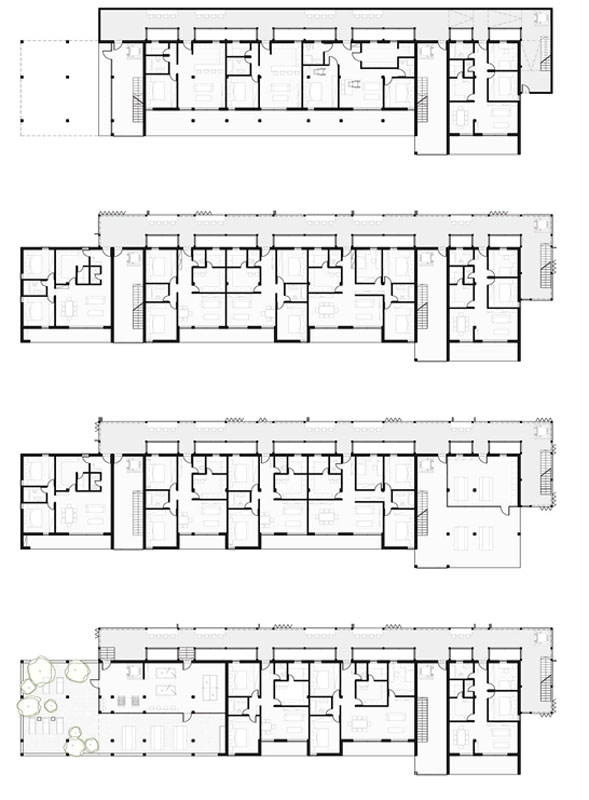

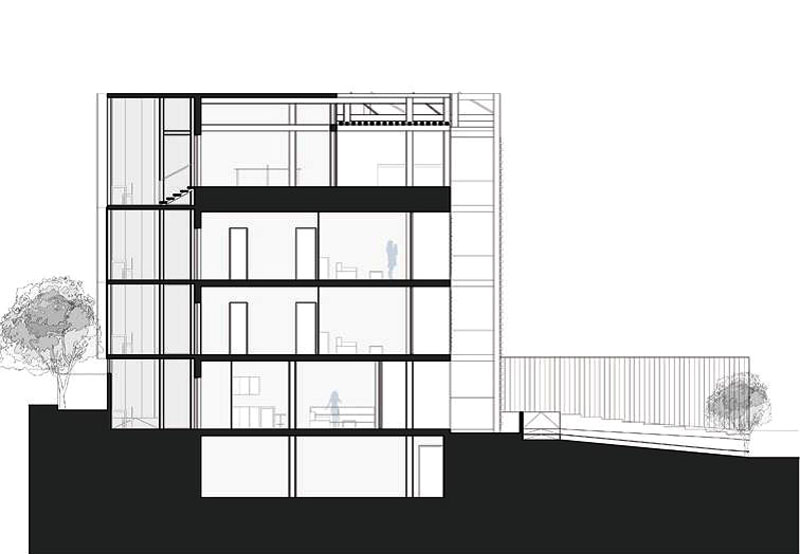



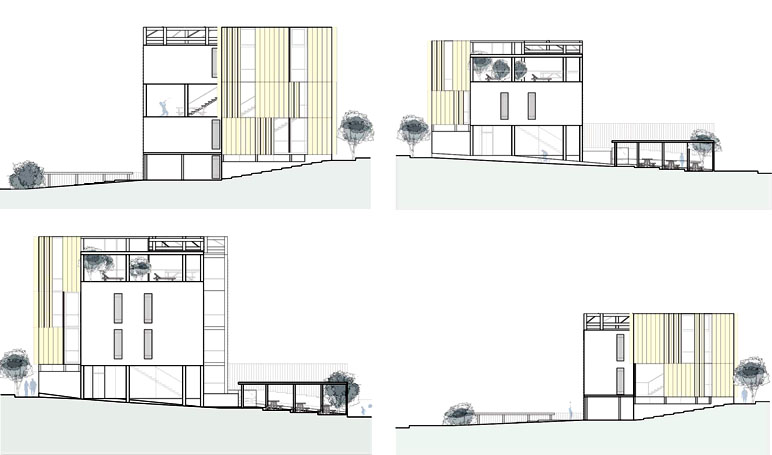

In the summer of 2013, the Mediterranean Games will take place in the city of Volos and Larisa.
For their conduct is necessary, the construction of new athletic facilities, the reconstruction of already existing ones, as well as the production of two Mediterranean Villages for the housing of 4.220 at Volos and 1.300 athletes at Larissa.
The subject of this final project concerns the master plan of the Mediterranean Village at Volos. The proposal embodies the requirements, according to the committee of the Games, which include collec- tive housing and services that are directly connected to them, social services, health centre, commercial zone, schools, police and fire stations as well as entertainment centres, while taking into consideration the environmental factor.
Concluding, this project aims at the creation of a village which relies on renewable energy resources concerning its function but also at the informing and the sensitization of the public regarding the envi- ronment.
Supervisors: Papadopoulos Spiros, Tsangrassoulis Aris, Triantafillidis Giorgos
Reference Number: 239


